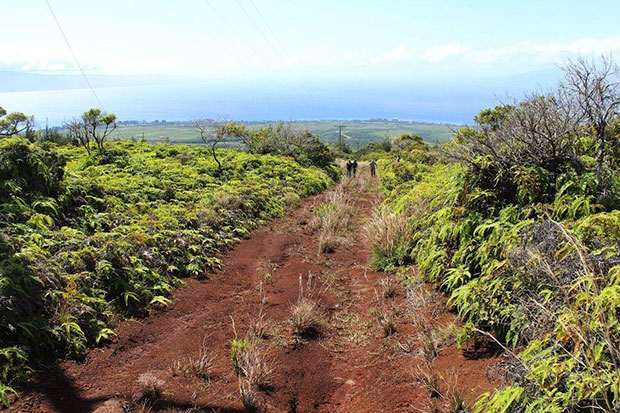
Coral reefs around the world are threatened by increased runoff of sediment and other land-based pollutants. To address the challenge of managing these pollutants with limited resources, University of Hawaiʻi at Mānoa Assistant Professor and Ecological Economist Kirsten Oleson and her former graduate students in the Department of Natural Resources and Environmental Management, Kim Falinski and Joey Lecky, recently published a new paper in the Journal of Environmental Management. In this study, “Upstream Solutions to Coral Reef Conservation: The Payoffs of Smart and Cooperative Decision Making,” the team shows how cooperation among landowners to reduce sediment runoff to nearshore reefs results in more cost-efficient and ecologically effective outcomes than when landowners act independently.
This paper is part of the larger Ocean Tipping Points project, which seeks to understand and characterize dramatic shifts in ocean ecosystems, and develop new tools to help managers avoid or respond to such shifts.

Reefs in danger
Land-based source pollutants have been linked to degradation on several Hawaiian reefs. When coral are covered in sediment, it reduces their ability to photosynthesize and grow, and allows for algae to take over. This study took place in Hawaiʻi’s West Maui region where the reefs and watersheds have been recognized by multiple state and federal programs as needing special protection. Likely due to sediment runoff during rain events, coral cover in this region’s northern reefs has dramatically declined from 30 percent to 10 percent between 2000 and 2015.
Helping to make better decisions
The research team compared the costs and benefits of alternative actions that could be taken to repair agricultural roads and reduce sediment runoff across the West Maui landscape. Researchers discovered that targeting specific runoff “hotspots” is more cost-effective than targeting all road segments within a given land parcel. Additionally, the best environmental gains for the lowest economic costs are achieved when landowners cooperate and target cost-effective road repairs, although collective action alone can be counter-productive when cost-effectiveness is ignored.
These findings highlight the utility of decision support tools to help managers understand tradeoffs, make better choices about how to allocate limited resources and find the most effective actions to minimize threats to coral reef ecosystems vulnerable to tipping points.
Oleson sums up, “Often, when faced with selecting what conservation actions to take, land managers will prioritize based on total area or least cost. What we show is that a much better option is to choose based on cost-effectiveness—how much bang you get for your buck. It also pays off to make choices across the broader landscape, not just your own backyard.”
The Department of Natural Resources and Environmental Management is part of the College of Tropical Agriculture and Human Resources.
—By Frederkia Bain


